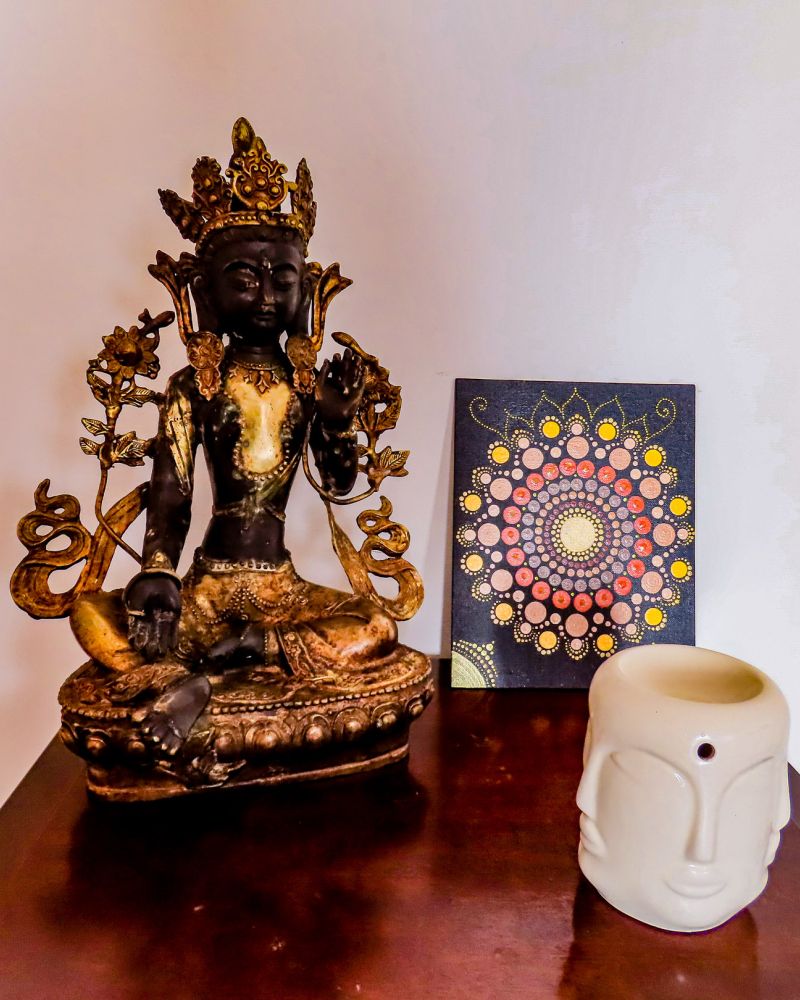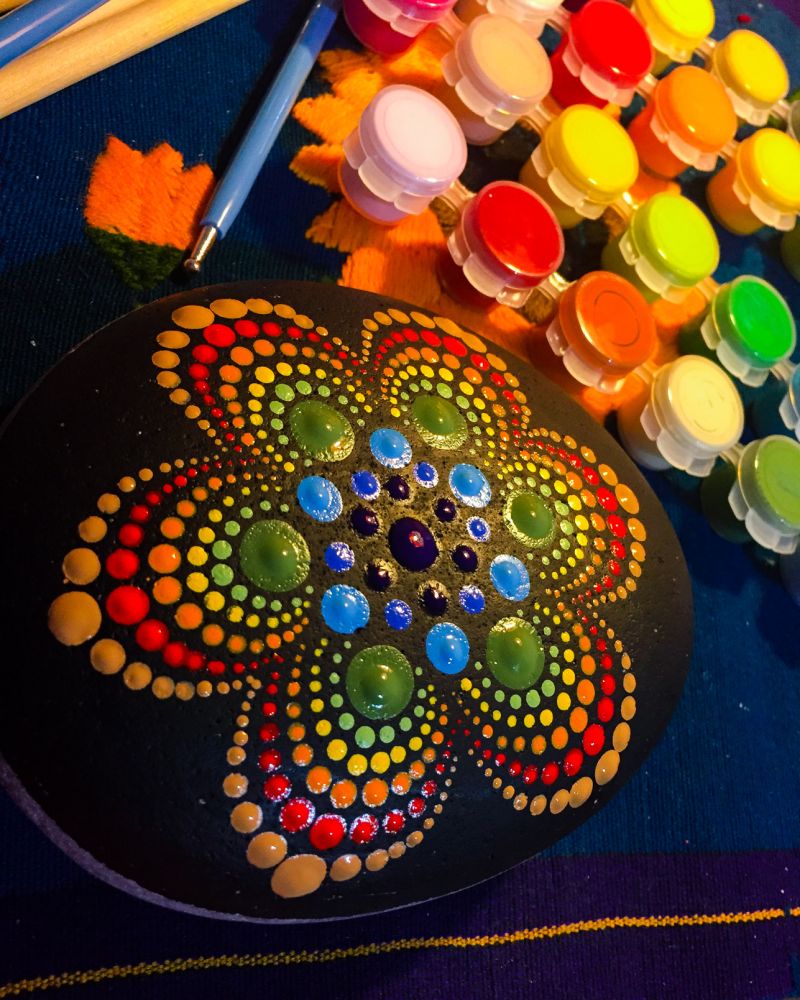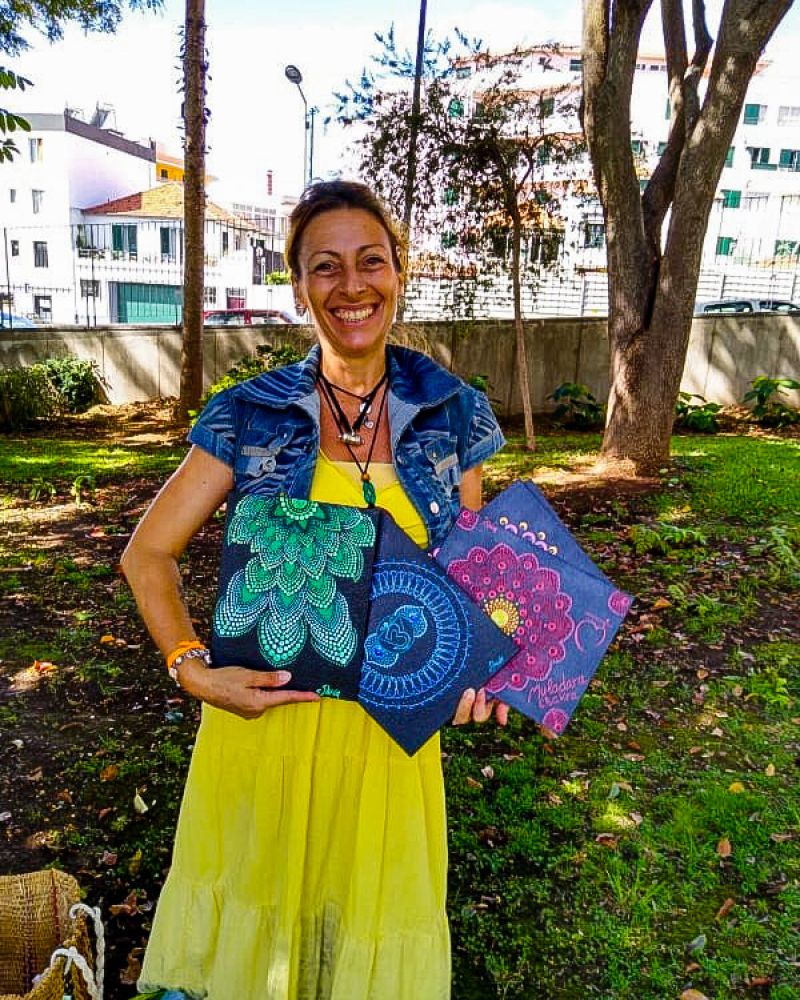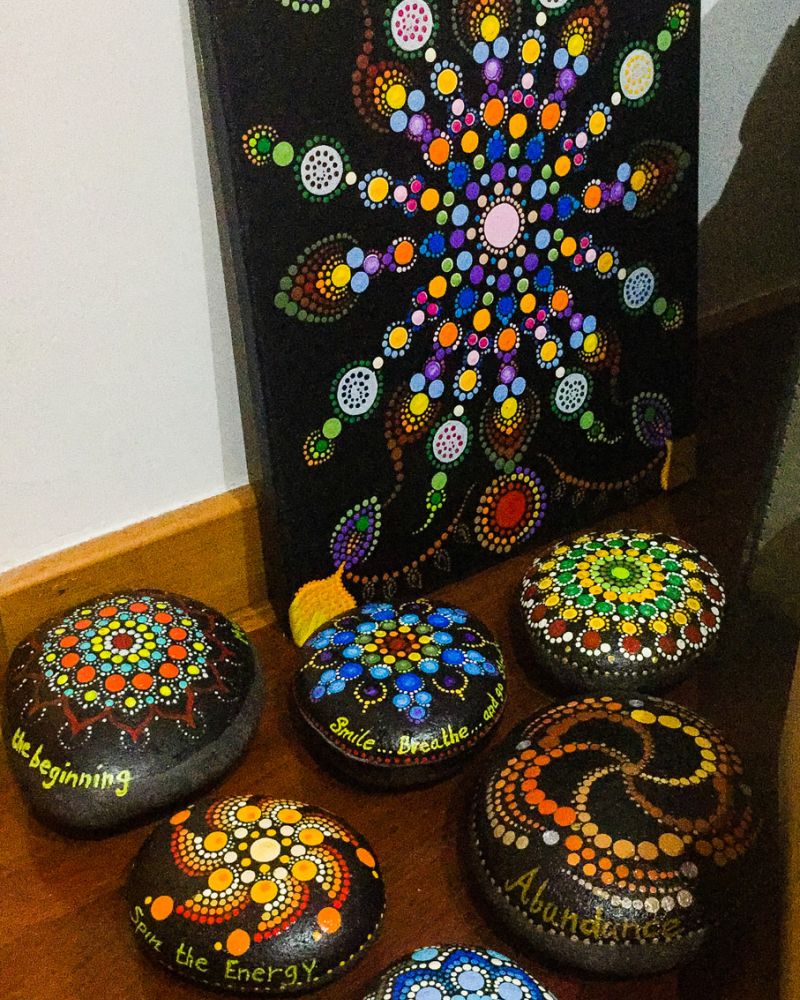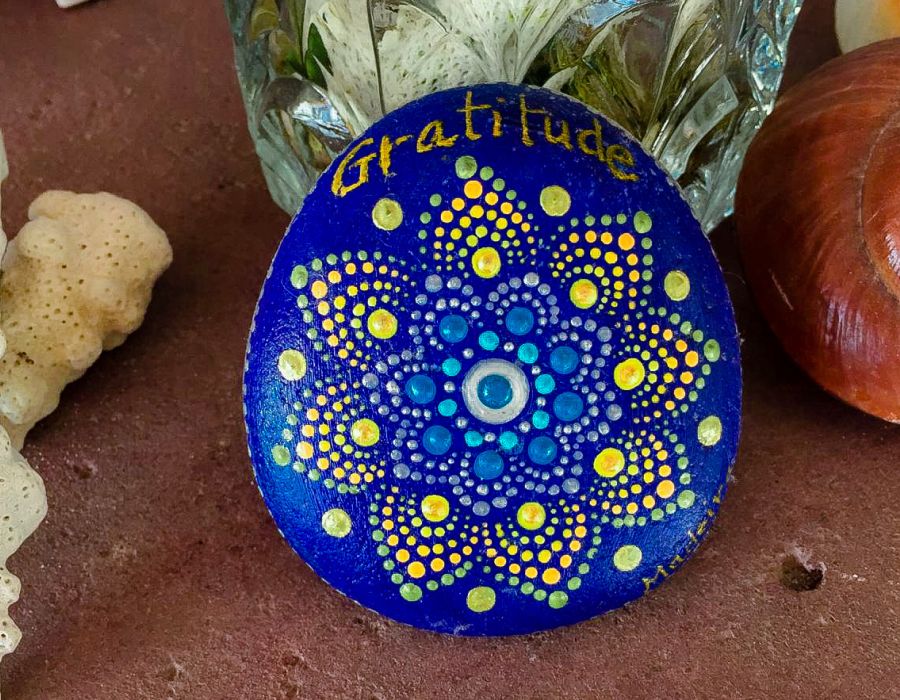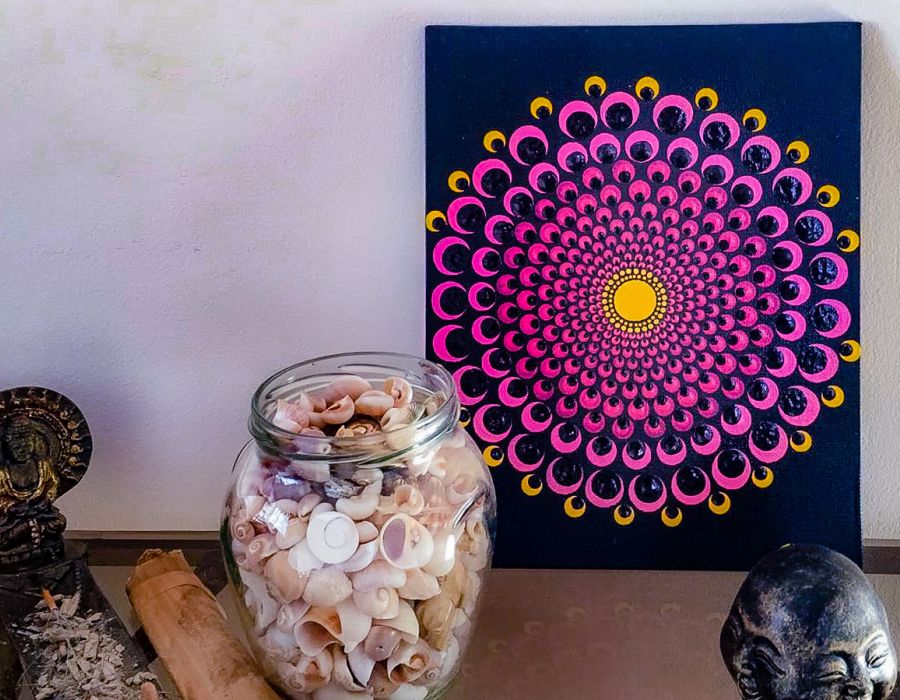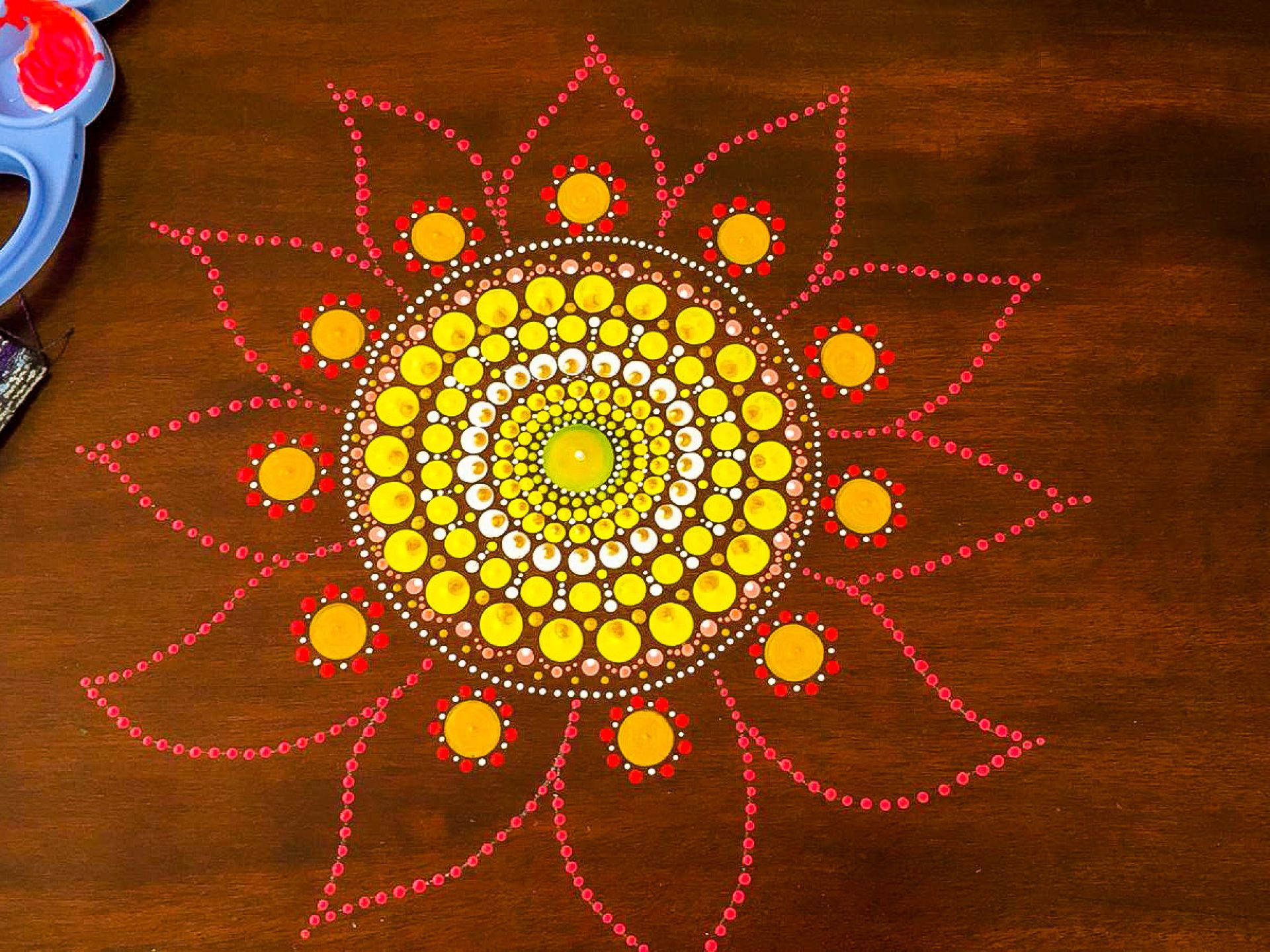
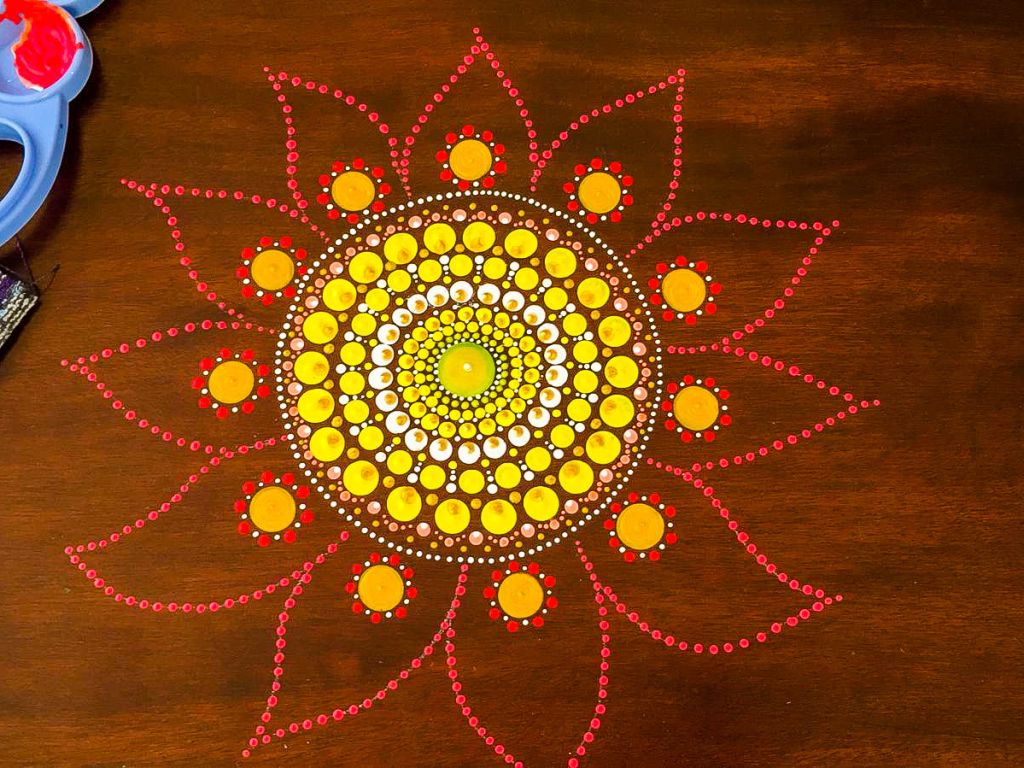
mandala
"Techniques used in Art Therapy can include drawing, painting, colouring, sculpting, or collage. Through Art, we may analyze what we have made and how it makes us feel.
Through exploring Art, people can look for themes and conflicts that may be affecting their thoughts, emotions, and behaviours.
We can make Therapeutic Art, that helps to heal mentally, physically or spiritually"
WHY I CHOOSE THE MANDALA ON ROCKS OR CANVAS?
Whether you are already a mandala expert, or you are approaching this world for the first time, I am sure you will be able to make your own and enjoy by being curious to really know how and why these symbols can be useful in life.
The colourfully dotted patterns are a real eyecatcher and easy to create. The great thing about it is, that you can do them without a lot of practice. You don’t need special skills or be an amazingly talented painter to get great results. It is not so hard to paint dots. With some simple tips and tricks, you get the hang of it in no time!
Then let’s discover their true essence, the key to their harmonic power.
The definition of Mandala in Sanskrit is "the essence enclosed in a circle". The mandala is a spiritual and ritual symbol in Hinduism and Buddhism, representing the universe. The circular designs symbolize the idea that life is never-ending and everything is connected. The mandala also represents a spiritual journey within the individual viewer. So the first level is understanding the unity in the cosmos and secondly, each individual must find their own place within it. It is sometimes drawn as a circle enclosing a square with a deity on each side that is mainly used to aid in meditation and yoga. Mandalas have many uses apart from meditation as the designs are meant to remove irritating thoughts and allow the creative mind to run free as well as relaxation. But ultimately people create and look at mandalas to centre the body and mind.
There is another very important meaning, which is often overlooked, or to which the right value is not given, which represents its true essence: that of teaching the true order.
WHY?
Simply because the mandala is the symbol of Creation, of perfect universal harmony. As you can see the symbol of the mandala, or the symbol of the circle, we find it everywhere.
In nature, in galaxies, the cells of every living form are circular in shape, which is why this symbol captures our attention so much. It is the desire of the soul to return to a state of calm and serenity, of pure primordial and natural harmony.
It is this process of creating round, symmetrical images that is beneficial from a healing perspective. This spiritual circle will help promote mindfulness, focus attention and promote healing and creativity.
HOW THEN TO USE MANDALAS IN LIFE SO THAT THEY CAN TRULY CREATE HARMONY?
Mandalas help to find the secrets of flow and success. Because it is only by learning the true order that there can be evolution in everything.
It is only by learning to keep calm and serenity that situations can be clearly seen and therefore act in the right way, the objectives can always be achieved!
HOW TO START IN CREATING YOUR OWN MANDALA?
By focusing on the intention that you want to bring into your life and then take in the beautiful design of the mandala by gently gazing at the design. If your mind starts to think about daily stresses simply bring your focus back to the beauty of the mandala. The beauty of the mandala should absorb all your attention by being draw into the designs and colours. Gradually you will feel yourself more relaxed and a feeling of lightness and intuitive thoughts may arise. Allow yourself to float with it and if your thoughts starts to wander just relax and refocus your attention back on the mandala.
COLORING THE MANDALA
Lets first discuss the colours and their meaning. You may use certain colours to attract certain things into your life. Take a look at the list below for some colour meanings. Some people draw the mandalas and do the colouring out of meditative purpose and then the intention and the colours are important. Others draw the mandalas out of creative interest and relaxation and then the colours do not take such big importance apart from personal preference or intuitive flow.
The colouring of the mandalas is used as a healing tool and is associated with reducing stress and anxiety as well as combating depression whilst improving the immune system among other things. It also allows you to express your creative side which often we are not able to do in our daily lives and stresses.
FEW SECRETS TO CREATE HARMONY IN YOUR LIFE WITH MANDALAS
THE ORDER
“Tidy spaces, emotions and thoughts guide the soul to achieve its goals faster and easier"
SIMPLICITY AND BALANCE
"Balance comes from genuine actions and intentions, which express simplicity and consistency"
THE INTUITION
"The spark of light that brings guiding messages in life is intuition, which can be developed with good training in receptivity and inner listening"
RELAX YOUR BODY
"A relaxed body is healthy and allows the mind to receive thoughts of balance and well-being"
EXPRESS YOUR TALENTS
“The purpose of life is to grow the seeds of one's talents and pass them on to others. Turning talent into a job is a source of success and freedom in life "
Why do these 5 basic principles of harmony develop perfectly with the meditation technique of mandalas?
Simply because mandalas are the symbols for the excellence of order and harmony.
Connecting to these structures of order and balance, creating and colouring them, is a real harmony training.
